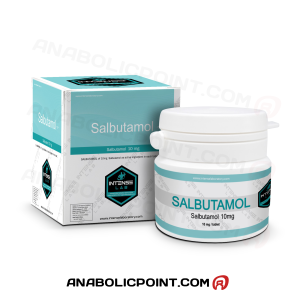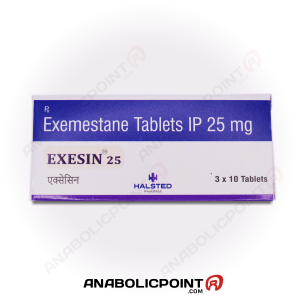Your basket is currently empty!
Anabolic Steroids in Extreme Sports: The Perils of Chasing Performance
Extreme sports embody the thrill of danger, physical exertion, and pushing boundaries. These activities, ranging from snowboarding and rock climbing to BMX biking and surfing, demand a unique combination of strength, agility, and mental resilience. The high stakes and competitive nature of extreme sports have led some athletes to seek ways to enhance their performance—sometimes turning to anabolic steroids.
The use of anabolic steroids in extreme sports presents a controversial issue, blending discussions of health, ethics, and fair play. This article examines the role of anabolic steroids in extreme sports, why athletes might resort to them, their effects, risks, and the measures being taken to combat doping.
Understanding Anabolic Steroids and Their Appeal in Extreme Sports
Anabolic steroids are synthetic derivatives of testosterone, a hormone that plays a crucial role in muscle growth, recovery, and overall physical performance. These substances are often used medically to treat conditions such as delayed puberty or muscle loss. However, their misuse by athletes seeking enhanced performance has sparked widespread controversy.
In extreme sports, the physical and mental demands are uniquely taxing. Athletes face challenges like high-impact landings, prolonged endurance requirements, and the risk of injury. Anabolic steroids can appear attractive due to their ability to:
- Increase Muscle Strength and Power: Steroids facilitate protein synthesis, leading to muscle growth and enhanced power. This can benefit athletes in sports requiring explosive movements, such as skateboarding or motocross.
- Accelerate Recovery: Extreme sports often involve high levels of physical strain. Steroids reduce recovery times, allowing athletes to train more frequently and intensely.
- Build Resilience: Athletes may use steroids to withstand injuries or improve performance in harsh environments, such as freezing slopes or scorching deserts.
While these effects can offer a temporary edge, the consequences of steroid misuse are far-reaching, impacting health, careers, and the integrity of the sport.
The Role of Steroids in Different Extreme Sports
Extreme sports encompass a wide range of disciplines, each with its specific physical demands. Here’s how anabolic steroids have been linked to various extreme sports:
1. Snowboarding and Skiing
High-altitude environments and high-speed descents make these sports physically intense. Steroids can enhance muscle endurance and strength, helping athletes navigate challenging courses and execute powerful jumps.
2. Rock Climbing and Mountaineering
Climbers face immense physical and mental challenges, especially in long ascents that require sustained effort. Steroids may provide a boost by improving endurance and recovery, but they can also increase the risk of cardiovascular complications in high-altitude settings.
3. BMX and Skateboarding
These sports involve explosive movements, balance, and agility. Steroids can enhance power, allowing athletes to execute more advanced tricks or sustain energy during competitions.
4. Surfing
The combination of endurance, strength, and agility required to navigate large waves can tempt some surfers to use steroids. Enhanced recovery from muscle fatigue or injuries might seem beneficial, particularly during back-to-back competitions.
The Risks of Steroid Use in Extreme Sports
While anabolic steroids can provide performance-enhancing benefits, their use comes with severe physical and psychological risks. These dangers are magnified in the context of extreme sports, where athletes already operate under high levels of stress and physical strain.
Physical Risks
- Cardiovascular Issues: Steroids can increase blood pressure and cholesterol levels, raising the risk of heart attacks and strokes. These risks are especially dangerous in high-intensity sports.
- Liver and Kidney Damage: Prolonged steroid use can lead to severe organ damage, particularly with oral steroids that pass through the liver.
- Hormonal Imbalances: Steroids can disrupt the natural production of testosterone, leading to side effects such as infertility, reduced libido, and mood swings.
- Injuries: Enhanced muscle strength can outpace the body’s natural adaptations, increasing the likelihood of tendon or ligament injuries.
Psychological Risks
- Aggression and Mood Swings: Known as “roid rage,” steroids can contribute to heightened aggression and unstable emotions.
- Addiction: Many users develop a psychological dependency on steroids, finding it difficult to stop even after facing adverse effects.
- Depression: Withdrawal from steroids can lead to severe mood disturbances, including depression and anxiety.
Ethical and Legal Implications of Steroid Use in Extreme Sports
The use of anabolic steroids undermines the foundational principles of fair play and integrity in sports. While extreme sports often operate outside traditional regulatory frameworks, the introduction of doping tarnishes their authenticity and spirit.
Challenges of Regulation in Extreme Sports
Unlike traditional sports, many extreme sports lack centralized governing bodies with the resources to enforce anti-doping measures. This creates an environment where doping can occur with less oversight. However, prestigious events like the X Games have begun adopting stricter anti-doping protocols to uphold fair competition.
Cultural Perspectives
Extreme sports often celebrate individualism and rebellion, which can lead to a more permissive attitude toward doping. This cultural dynamic complicates efforts to discourage steroid use.
Efforts to Combat Steroid Use in Extreme Sports
Despite the challenges, efforts are being made to address steroid use in extreme sports. These initiatives focus on education, testing, and promoting a culture of clean competition.
- Awareness Campaigns: Athletes are educated about the health risks and ethical consequences of steroid use, encouraging them to pursue natural methods of performance enhancement.
- Testing and Enforcement: High-profile events and professional circuits have begun implementing drug testing protocols, targeting known doping agents like anabolic steroids.
- Support for Clean Athletes: Organizations are offering resources to help athletes optimize their training and recovery without resorting to banned substances.
Frequently Asked Questions About Anabolic Steroids in Extreme Sports
1. Why do some athletes in extreme sports use anabolic steroids?
Athletes may use steroids to enhance strength, endurance, and recovery, allowing them to perform better in physically demanding environments.
2. Are anabolic steroids common in extreme sports?
While less publicized than in traditional sports, steroid use exists in extreme sports, particularly in high-stakes or physically taxing disciplines.
3. How do steroids enhance performance?
Steroids increase muscle growth, accelerate recovery, and improve endurance by boosting protein synthesis and reducing inflammation.
4. What are the health risks of steroids?
Steroid use can lead to cardiovascular issues, organ damage, hormonal imbalances, and psychological effects like aggression and depression.
5. Are there legal performance-enhancing alternatives?
Yes, legal alternatives such as creatine, protein supplements, and advanced recovery techniques can help athletes optimize performance naturally.
6. Are extreme sports regulated for doping?
Some high-profile extreme sports events, like the X Games, implement anti-doping measures, but many smaller competitions lack stringent oversight.
7. How can athletes avoid unintentional doping?
Athletes should consult with professionals to verify supplements and avoid substances that might contain banned ingredients.
8. Why is steroid use controversial in extreme sports?
Steroid use undermines fair competition, poses significant health risks, and goes against the ethos of self-reliance and natural skill in extreme sports.
9. Can steroid use be detected easily?
Modern drug testing methods can detect a wide range of anabolic steroids, though some athletes attempt to evade detection with masking agents.
10. How can extreme sports reduce steroid use?
Improving education, implementing stricter testing, and promoting ethical practices are key to reducing steroid use in extreme sports.
Redefining Excellence in Extreme Sports
Extreme sports celebrate the fusion of human skill, creativity, and endurance in the face of formidable challenges. The use of anabolic steroids disrupts this harmony, replacing hard-earned achievement with artificial enhancement. While the allure of steroids may tempt some athletes, the risks—both personal and professional—far outweigh any temporary benefits.
By fostering a culture of clean competition and providing athletes with the resources to succeed naturally, the spirit of extreme sports can remain untarnished. The thrill of the game lies not in shortcuts but in the authenticity of the struggle and the triumph of the human spirit.













